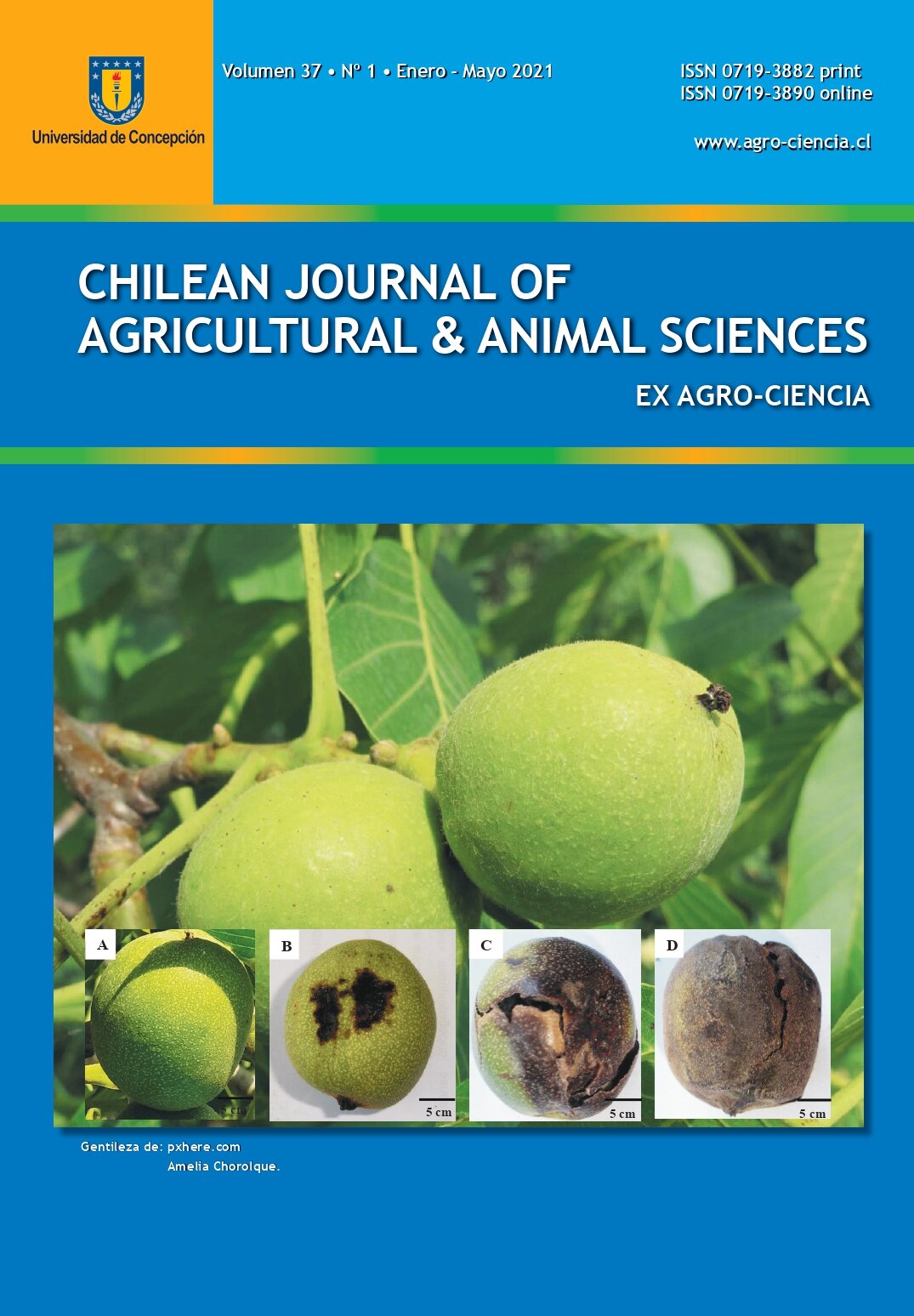VEGETATIVE AND PRODUCTIVE RESPONSES OF ORGANIC APPLE (Malus domestica L.) TO FOSSILIZED RED GUANO AND A CONTROLLED-RELEASE FERTILIZER
Eduardo von Bennewitz 1, 2*, Rodrigo Cazanga-Solar4, Marcos Carrasco-Benavides3, Claudio Fredes3, Jhonny Edison Alba-Mejía5, and Tomas Lošak2
ABSTRACT
Fossilized red guano and organic controlled-release fertilizers are among the N fertilizers that can be used in organic production. There is little information about the impacts of these fertilizers on the vegetative growth, fruit yield and quality, and mineral contents in fruits. The objective of this study was to assess the responses of increasing levels of N fertilization with fossilized red guano and a controlled-release fertilizer (Fertil®) on the vegetative growth, fruit yield, quality and mineral composition of ‘Granny Smith’ apples grown under organic management. Treatments included the application of increasing levels of N fertilization (100, 120 and 170 kg N ha-1) applied 50% during early spring and 50% during early summer. In general, trees with higher levels of N fertilization showed greater terminal shoot length and trunk cross-sectional area (TCSA) than those of the control treatment. Yield ranged from 60.0 to 62.0 kg tree-1, as well as fruit mineral concentration and ratios were not affected by the treatments. Leaf mineral concentrations were affected only in the case of N. Bitter pit incidence was low (1.4 in a scale 1-4), and therefore not statistically significant. Both fertilizers proved effective in enhancing vegetative growth compared to the control. Fertilizer applications did not affect tree cropping, fruit firmness, TSS, starch index, fruit ground color and incidence of physiological disorders.
Key words: Organic fruit production, organic fertilizers, physiological disorders, mineral content
1 Universidad Austral Chile, Inst. Plant Prod and Protect, Campus Isla Teja, Valdivia, Chile
2 Mendel University in Brno, Faculty of Regional Development and International Studies, Trída Generála Píky 2005/7. Brno – Cerná Pole 613 00, Czech Republic.
3 Universidad Católica del Maule, Escuela de Agronomía, Camino a los Niches km 5, Curicó, Chile.
4 Universidad de Chile, Laboratorio de Investigación de Ciencias Ambientales (LARES), Av. Santa Rosa 11315, La Pintana, Santiago, Chile.
5 Mendel University in Brno, Faculty of AgriSciences, Department of Animal Nutrition and Forage Production, Zemedelska 1, Brno – Cerná Pole 613 00, Czech Republic.
* Autor de correspondencia E-mail:[email protected]


